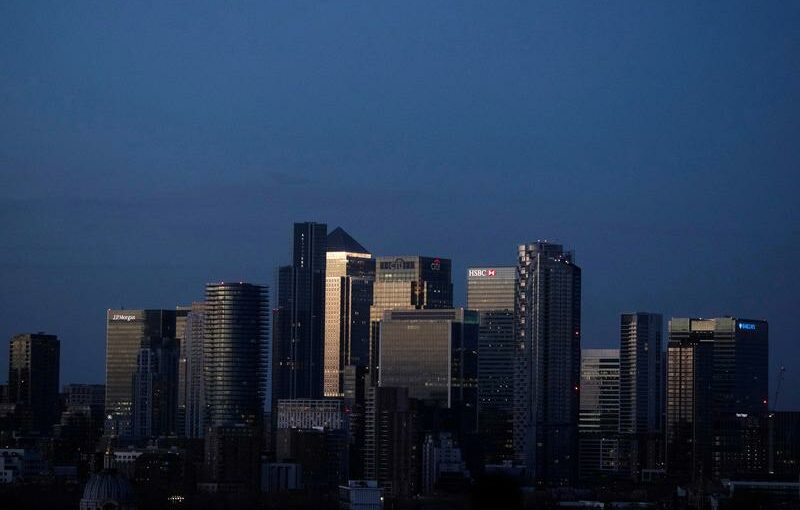LONDON (Reuters) – Credit rating agency Fitch says is it likely to wait until next year before making final judgment calls on many of the countries still on downgrade warnings due to the COVID-19 crisis.
Fitch has downgraded a record 35 countries, including 10 more than once, over the last year as the pandemic has shuttered economies and sent debt levels soaring.
It looks to be far from over too. The firm still has 35 sovereigns on a ‘negative outlook’ – rating agency parlance for a warning – ranging from top-rated AAAs like the United States and Australia to many at the bottom end of spectrum.
Statistically that would point to another major wave of cuts. Historically 63% of Fitch’s negative outlooks have ended up in a downgrade although crises do tend to be different and this one has been especially so.
In the aftermath of the financial crisis in 2009 and 2010, 46% and 43% of the countries put on negative outlooks in those respective years were downgraded within roughly 6 months. This time around is has only been 21% even though many where placed on warnings nearly a year ago.
Fitch’s managing director for global sovereigns and supranationals, Tony Stringer, said the unique nature of the pandemic combined with uncertainty over the recovery and global interest rates means many of those at-risk ratings decisions will need more time.
“It will be next year before we see the final judgement on a lot of these countries,” Stringer told Reuters.
“I’m not expecting to see a significant number of negative actions in the next few months… I think it will take us longer to assess how countries are dealing with the recovery phase and then to see the fiscal consolidation plans.”
Fitch has been the most active of the so-called ‘big three’ rating agencies during the COVID-19 crisis. With over 45 sovereign downgrades in total and 35 countries cut it has lowered nearly 30% of those it rates.
S&P has been next, data shows. At the end of February it had made 37 cuts or 18% of its sovereign ratings, while Moody’s had lowered 33, or 20% of the countries it rates.
(GRAPHIC: Sovereign rating downgrades during COVID – )
CUSHIONING EFFECT
Considering the huge jump in debt – the IMF has estimated it has collectively surged 20 percentage points to 124% of GDP in developed economies and 9 percentage points to a record 61% in emerging markets – some analysts have questioned why there haven’t been more downgrades.
Stringer said there had been a number of reasons. Firstly economies had not suffered as badly as had been originally expected. Like the IMF, Fitch has just upgraded its global growth forecasts again here.
The rapid response of top central banks has slashed borrowing costs, easing the impact of higher debt loads, while the fact that all countries debts have risen means that individual countries haven’t stood out in how bad they look.
“When you have a crisis that impacts all countries, some of those indicators on the relative scale are all going to move together – so it creates a bit of a cushioning effect for ratings,” Stringer said.
So what will determine whether countries are downgraded or spared?
As well as decisions like the United States, Japan and Britain that will grab the headlines, there will also be crucial calls on Colombia, India, Romania, Uruguay and Panama that would lose their prized investment grades and drop to “junk” if cut.
“The question is do governments have a credible plan to get deficits back on to a downward path and what is the country’s track record like,” Stringer said, referring to sticking to fiscal repairs.
However, “with interest rates so low, it is effectively buying policymakers some time to think about the process,” he added, especially in advanced economies.
Source: Read Full Article
